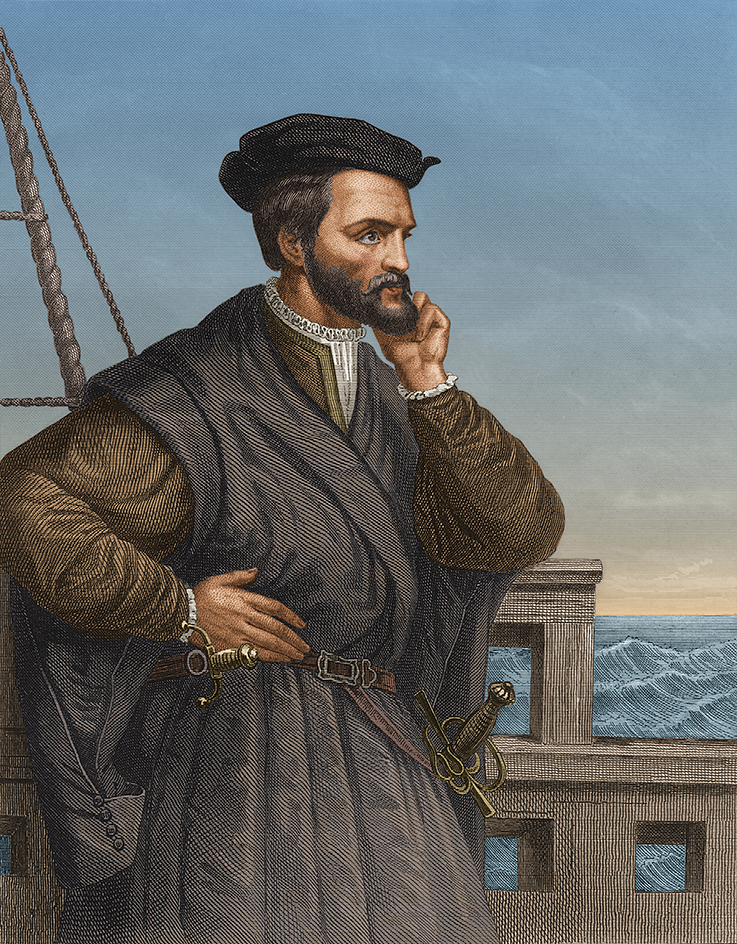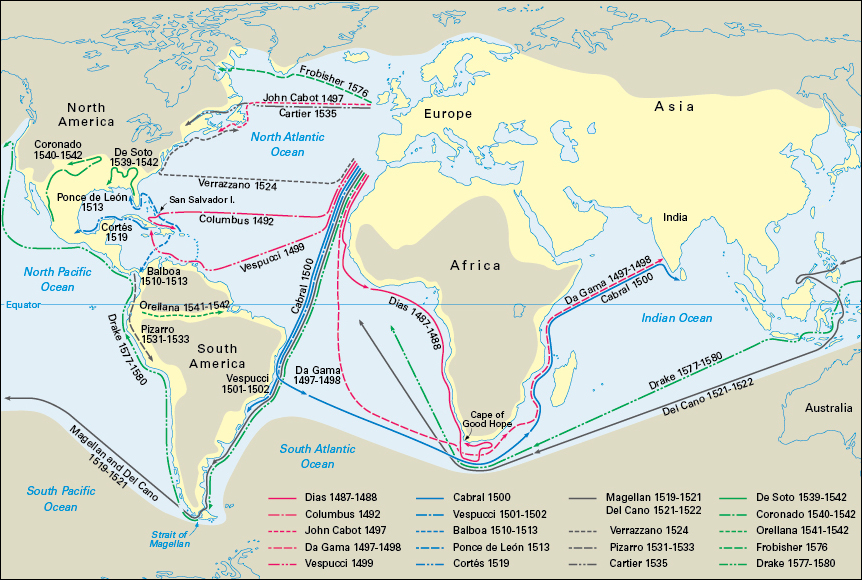Cartier, Jacques, << kahr TYAY, zhahk >> (1491?-1557), was a French navigator. His explorations established the basis for France’s claims to territory in what is now Canada. In 1535, he led the first European expedition up the St. Lawrence River.

Cartier was born in the seaport of St.-Malo and studied navigation in Dieppe, a French center for navigators. He may have sailed to Newfoundland with a fishing fleet in the early 1500’s. Some historians believe he was with the Italian navigator Giovanni da Verrazzano on French expeditions to the New World during the 1520’s.
Exploration of Canada.
In 1534, King Francis I of France sent Cartier to North America to search for gold and other precious metals, as well as a Northwest Passage to China. Cartier left St.-Malo in April with two ships. The expedition sailed into what is now the Gulf of St. Lawrence and landed on the Gaspé Peninsula, which Cartier claimed for France.
Cartier met a group of native Iroquoian people, who told him that precious jewels and metals could be found farther northwest. The French presented gifts and established friendly relations with the people. Their chief let two of his sons sail to France with Cartier in August. In exchange, Cartier left several of his men with the chief. Cartier’s men brought home a supply of corn that was probably the first corn ever seen in northern Europe.
In May 1535, the king sent Cartier on a second expedition to Canada. The two Iroquoian boys returned home on this voyage. On August 10, Cartier reached the northern coast of the Gaspé Peninsula and entered a nearby bay. He named the bay for Saint Lawrence because the expedition had arrived there on the saint’s feast day. Cartier then saw the mouth of the great river that also became known for Saint Lawrence. Cartier sailed up the river to the foot of a tree-covered peak, which he named Mont Réal (Mount Royal). It became the site of the city of Montreal. Cartier sailed back to what is now Quebec City for the winter. The expedition returned to France the next summer.

Attempts at colonization.
In 1541, the king organized an expedition to establish a permanent settlement in Canada. He appointed a nobleman named Jean François de La Roque, Sieur de Roberval, in command over Cartier. However, Cartier sailed in May before Roberval had completed plans for his own voyage.
Cartier sailed up the St. Lawrence River to what is now Cap Rouge, near the Iroquoian village of Stadacona (now Quebec City). Some of his men remained there and built a settlement. Cartier and the others continued to search for gold. They sailed to Mont Réal and traveled farther west on foot but found no precious metals. Cartier then returned to the settlement.
During the winter, French relations with the Stadaconans soured, largely due to French demands for food and supplies from them. The Stadaconans attacked and killed several Frenchmen. Roberval had not arrived by spring, and Cartier decided to sail back to France. He had not found precious metals or a Northwest Passage.
On his return voyage, Cartier met Roberval in Newfoundland. Roberval ordered Cartier to remain in Canada, but Cartier refused and warned the nobleman about the native peoples. Cartier then returned to France. He was pardoned for disobeying Roberval and lived the rest of his life in and around St.-Malo. He died on Sept. 1, 1557.
See also New Brunswick (Exploration and settlement) ; Roberval, Jean François de La Roque, Sieur de .
